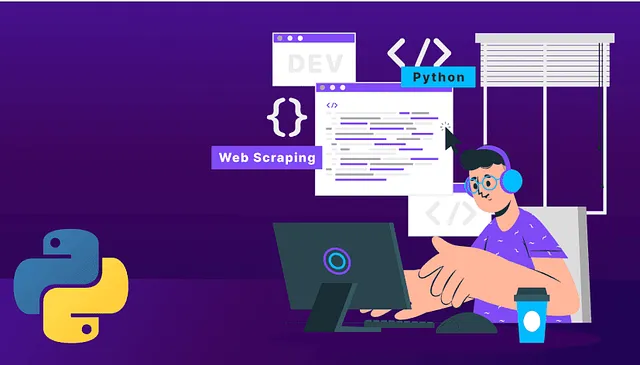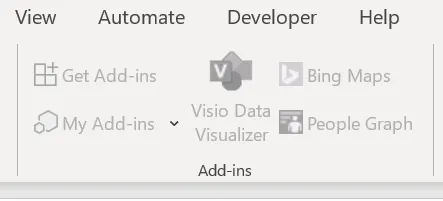探索网页爬取技术:用Python深入研究

简介
在数字时代,数据丰富多样,但高效地访问数据可能是一个挑战。网页抓取(web scraping)是从网站提取信息的过程,提供了一种解决方案。在本文章中,将使用Python深入探讨网页抓取的艺术,通过三个不同的网站:Politifact、Altnews和Mastodon,探索不同的工具和方法。对于这个项目,我从ChatGPT中获取了一个基本的代码模板,并根据我的要求进行了更新,并在代码中采用了自己的方法。
所需软件包
确保您在Python环境中使用pip安装了以下软件包,pip是Python的软件包管理器。您可以使用以下命令进行安装:
pip install selenium webdriver_manager requests beautifulsoup4
使用BeautifulSoup爬取Politifact
Politifact是一個豐富的文章和事實核查的寶藏,使其成為我們爬取數據的理想選擇。我們將使用BeautifulSoup,一個用於解析HTML和XML的Python庫,來遍歷該網站的結構。
面临的挑战
- 大量的文章:Politifact 网站包含大量的文章和事实核查,使得有效地抓取所有数据变得具有挑战性。
- 连续网页爬取:最初按顺序爬取每篇文章导致了很大的时间消耗,特别是需要在爬取个别文章之前先检索所有的链接。
- 效率与速度:鉴于海量的数据,确保爬取过程高效快速变得至关重要。
- 分析复杂的HTML结构:Politifact的网站可能具有复杂的HTML结构,需要仔细解析以准确提取所需的信息。
方法
- 收集文章和事实核查链接:我们利用BeautifulSoup从文章和事实核查的列表页面中提取链接。
- 并行执行:为了加快抓取过程,我们使用ThreadPoolExecutor同时获取链接并并发地抓取文章。
- 提取数据:使用BeautifulSoup,我们从每篇文章中获取各种详细信息,包括标题、内容、图片、作者信息和来源。
- 保存数据:最后,我们将抓取的数据存储在JSON文件中以供进一步分析。
代码
# Import necessary libraries
import requests
from bs4 import BeautifulSoup
import json
import concurrent.futures
# Function to fetch article details
def fetch_article_details(link):
response = requests.get(link)
if response.status_code == 200:
article = {}
soup = BeautifulSoup(response.content, "html.parser")
# Extract relevant details such as title, content, images, author, etc.
article["title"] = soup.find("div", class_="m-statement__quote").text.strip()
article["content"] = soup.find("article", class_="m-textblock").text.strip()
article["images"] = [img["src"] for img in soup.find("article", class_="m-textblock").find_all("img")]
# Extract author details
authors = []
for author in soup.find_all("div", class_="m-author"):
a = {}
if author.find("img") is not None:
a["avatar"] = author.find("img")["src"]
a["name"] = author.find("div", class_="m-author__content copy-xs u-color--chateau").find("a").text.strip()
a["profile"] = "https://www.politifact.com" + author.find("div", class_="m-author__content copy-xs u-color--chateau").find("a")["href"]
authors.append(a)
article["authors"] = authors
return article
else:
print("Failed to retrieve the page. Status code:", response.status_code)
# Function to fetch article links
def fetch_article_links(page_number):
url = f"https://www.politifact.com/article/list/?page={page_number}"
response = requests.get(url)
if response.status_code == 200:
soup = BeautifulSoup(response.content, "html.parser")
articles = soup.find_all("div", class_="m-teaser")
return ["https://www.politifact.com" + article.find("h3", class_="m-teaser__title").find("a")["href"] for article in articles]
else:
print(f"Failed to retrieve the page {url}. Status code:", response.status_code)
return []
# Fetch article links in parallel
with concurrent.futures.ThreadPoolExecutor() as executor:
article_links = []
results = executor.map(fetch_article_links, range(1, 10)) # Adjust range as needed
for result in results:
article_links.extend(result)
articles = []
# Fetch article details concurrently
with concurrent.futures.ThreadPoolExecutor() as executor:
results = executor.map(fetch_article_details, article_links)
for result in results:
if result:
articles.append(result)
# Save the results to a JSON file
with open('politifact_articles.json', 'w') as json_file:
json.dump(articles, json_file, indent=4)
print("Data saved to politifact_articles.json")
使用Selenium进行动态爬取: Altnews案例研究
Altnews(其他消息)在动态加载内容方面提出了独特的挑战。为了克服这个难题,我们转向 Selenium,这是一个强大的用于网页浏览的自动化工具。
面临的挑战
- 动态加载的内容: Altnews 网站在用户向下滚动页面时动态加载内容,使得提取所有相关数据变得具有挑战性。
- 滚动和页面交互:Selenium需要模拟用户交互,如滚动来触发加载额外内容,这需要仔细编写脚本。
- 解析动态HTML:从动态加载的HTML元素中提取数据可能会具有挑战性,因为结构可能会动态变化。
- 效率和速度:在保证爬取过程快速可靠的同时,高效处理动态内容至关重要。
方法
- 动态内容处理:Selenium允许我们通过滚动网页来加载额外的内容,从而模拟人类交互。
- 提取链接:一旦页面完全加载完成,我们使用Selenium来提取各个文章的链接。
- 抓取文章:利用BeautifulSoup,我们抓取每篇文章以检索相关信息,如标题,作者,内容,图片和视频。
- 为了提高效率,我们使用ThreadPoolExecutor同时获取和处理多个文章,从而进行并行处理。
代码
# Import necessary libraries
import json
import re
import concurrent.futures
from bs4 import BeautifulSoup
from selenium import webdriver
from selenium.webdriver.common.by import By
from webdriver_manager.chrome import ChromeDriverManager
import time
from selenium.webdriver.chrome.options import Options
# Set up Chrome options
chrome_options = Options()
chrome_options.add_argument("--headless") # Run Chrome in headless mode
chrome_options.add_argument("--disable-gpu")
# Initialize WebDriver
driver = webdriver.Chrome(service=Service(ChromeDriverManager().install()), options=chrome_options)
url = 'https://www.altnews.in/'
# Open the website
driver.get(url)
try:
num_scrolls = 10
# Scroll the page multiple times to load more content
for _ in range(num_scrolls):
# Scroll down to the bottom of the page
driver.execute_script("window.scrollTo(0, document.body.scrollHeight);")
# Wait for some time for the content to load
time.sleep(2)
links = driver.find_elements(By.CSS_SELECTOR, 'h4 a')
# Filter links that match the specified pattern
filtered_links = [link.get_attribute("href") for link in links if re.match(r'^https://www.altnews.in/.+$', link.get_attribute("href"))]
def fetch_post_data(link):
response = requests.get(link)
if response.status_code == 200:
post = {}
soup = BeautifulSoup(response.content, 'html.parser')
author_detail = soup.find('span', class_='author vcard')
if author_detail is not None:
post["title"] = soup.find('h1', class_='headline entry-title e-t').get_text()
element = soup.find('div', class_='entry-content e-c m-e-c guten-content')
post["author_avatar"] = author_detail.find('img')['src']
post["author_name"] = author_detail.find('a', class_="url fn n").get_text()
post["author_profile"] = author_detail.find('a', class_="url fn n")['href']
images = [img['src'] for img in element.find_all('img')]
if images:
post["images"] = images
videos = [vid['src'] for vid in element.find_all('video')]
if videos:
post["videos"] = videos
post["content"] = element.get_text()
post["link"] = link
pprint.pprint(post)
return post
# Concurrently fetch data from multiple links
with concurrent.futures.ThreadPoolExecutor() as executor:
posts = list(executor.map(fetch_post_data, filtered_links))
# Write to JSON file
with open('altnews.json', 'w') as json_file:
json.dump(posts, json_file, indent=4)
finally:
driver.quit()
应对Mastodon的动态界面
鲸鱼象(Mastodon)由于其动态的界面和持续更新的内容而提出了独特的挑战。我们再次采用Selenium来完成这个任务,但需要额外考虑。
面临的挑战
- 无限滚动:Mastodon的界面采用无限滚动,当用户向下滚动时,动态加载新的帖子,增加了抓取过程的复杂性。
- 重复内容:由于页面的动态特性,重复滚动可能导致重复内容被抓取,需要进行仔细处理。
- 解析HTML属性:为了避免重复爬取相同的内容,识别每个帖子的唯一属性变得必要。
- 数据提取和存储:在确保高效存储和处理的同时,提取各种数据元素(如图片、视频和帖子详情)存在一定的挑战。
方法
- 增量滚动:为了处理Mastodon的动态界面,我们将滚动拆分为较小的增量,这样我们可以捕捉到新的帖子,同时避免冗余。
- 唯一帖子标识:Mastodon为每个帖子分配一个独特的数据-id属性,使我们能够区分新帖子和先前捕获的帖子。
- 提取帖子数据:使用Selenium,我们从每篇帖子中提取各种细节,包括作者详情、内容、媒体文件(图片/视频)、状态卡和互动指标。
- 数据导出:我们同时以CSV和JSON格式导出抓取的数据,以便进行进一步的分析和可视化。
代码
# Import necessary libraries
import csv
import json
import pprint
from selenium import webdriver
from selenium.webdriver.common.by import By
from webdriver_manager.chrome import ChromeDriverManager
from selenium.webdriver.chrome.service import Service
import time
from selenium.webdriver.chrome.options import Options
from selenium.webdriver.common.keys import Keys
# Set up Chrome options
chrome_options = Options()
chrome_options.add_argument("--headless") # Run Chrome in headless mode
chrome_options.add_argument("--disable-gpu")
# Initialize WebDriver
driver = webdriver.Chrome(service=Service(ChromeDriverManager().install()), options=chrome_options)
url = 'https://mastodon.social/'
# Open the website
driver.get(url)
try:
visited = []
num_scrolls = 30
# Find the <body> element
body = driver.find_element(By.TAG_NAME, 'body')
posts = []
# Scroll using keyboard keys
for _ in range(num_scrolls):
curr_post = {}
body.send_keys(Keys.PAGE_DOWN) # Scroll down one page
time.sleep(1) # Adjust sleep time as needed
for article in driver.find_elements(By.CSS_SELECTOR, '.status.status-public'):
if article.get_attribute("data-id") is not None and article.get_attribute("data-id") not in visited:
# Extract post details
curr_post["avatar"] = article.find_elements(By.CSS_SELECTOR, '.status__avatar img')[0].get_attribute("src")
curr_post["name"] = article.find_elements(By.CSS_SELECTOR, '.display-name__html')[0].text
curr_post["account"] = "\n".join([i.text for i in article.find_elements(By.CSS_SELECTOR, '.display-name__account')])
curr_post["content"] = "\n".join([i.text for i in article.find_elements(By.CSS_SELECTOR, '.status__content__text.status__content__text--visible.translate')])
# Extract media (images and videos)
media = article.find_elements(By.CSS_SELECTOR, 'img')
if media:
curr_post["pictures"] = [i.get_attribute("src") for i in media]
media = article.find_elements(By.CSS_SELECTOR, 'video')
if media:
curr_post["videos"] = [i.get_attribute("src") for i in media]
# Extract hashtags, if available
hashtags = article.find_elements(By.CSS_SELECTOR, 'hashtag-bar')
if hashtags:
curr_post["hashtags"] = [i.text for i in hashtags]
# Extract status card content and link
if article.find_elements(By.CSS_SELECTOR, '.status-card__content'):
curr_post["status_card"] = "\n".join([i.text for i in article.find_elements(By.CSS_SELECTOR, '.status-card__content')])
curr_post["status_card_link"] = article.find_elements(By.CSS_SELECTOR, '.status-card.expanded')[0].get_attribute("href")
# Extract engagement metrics (boosts, favorites, replies)
counters = article.find_elements(By.CSS_SELECTOR, '.icon-button__counter')
if counters:
curr_post["boosts"] = counters[1].text
curr_post["favs"] = counters[2].text
curr_post["replies"] = counters[0].text
pprint.pprint(curr_post)
if len(visited) > 10:
visited.pop(0)
visited.append(article.get_attribute("data-id"))
posts.append(curr_post)
# Write to CSV file
with open('mastodon_posts.csv', mode='w', newline='', encoding='utf-8') as file:
fieldnames = ['avatar', 'name', 'account', 'content', 'pictures', 'videos', 'status_card', 'status_card_link', 'boosts', 'favs', 'replies']
writer = csv.DictWriter(file, fieldnames=fieldnames)
writer.writeheader()
for post in posts:
writer.writerow(post)
# Write to JSON file
with open('mastodon_posts.json', 'w') as json_file:
json.dump(posts, json_file, indent=4)
finally:
driver.quit()
结论
随着我们在网络爬虫的动态领域中的旅程接近尾声,我们回顾了沿途遇到的无数挑战和胜利。从Politifact的结构限制到Altnews和Mastodon Social的动态景观,每个网站都呈现了独特的障碍,考验了我们的毅力和创造力。通过Python库、自动化工具和策略方法的明智应用,我们突破了动态内容的限制,带着丰富有价值的数据获得了胜利。在我们制定新的计划并踏上未来的探险之旅时,愿我们的经验成为扩展中的网络爬虫宇宙中的同伴们的灵感之光。





